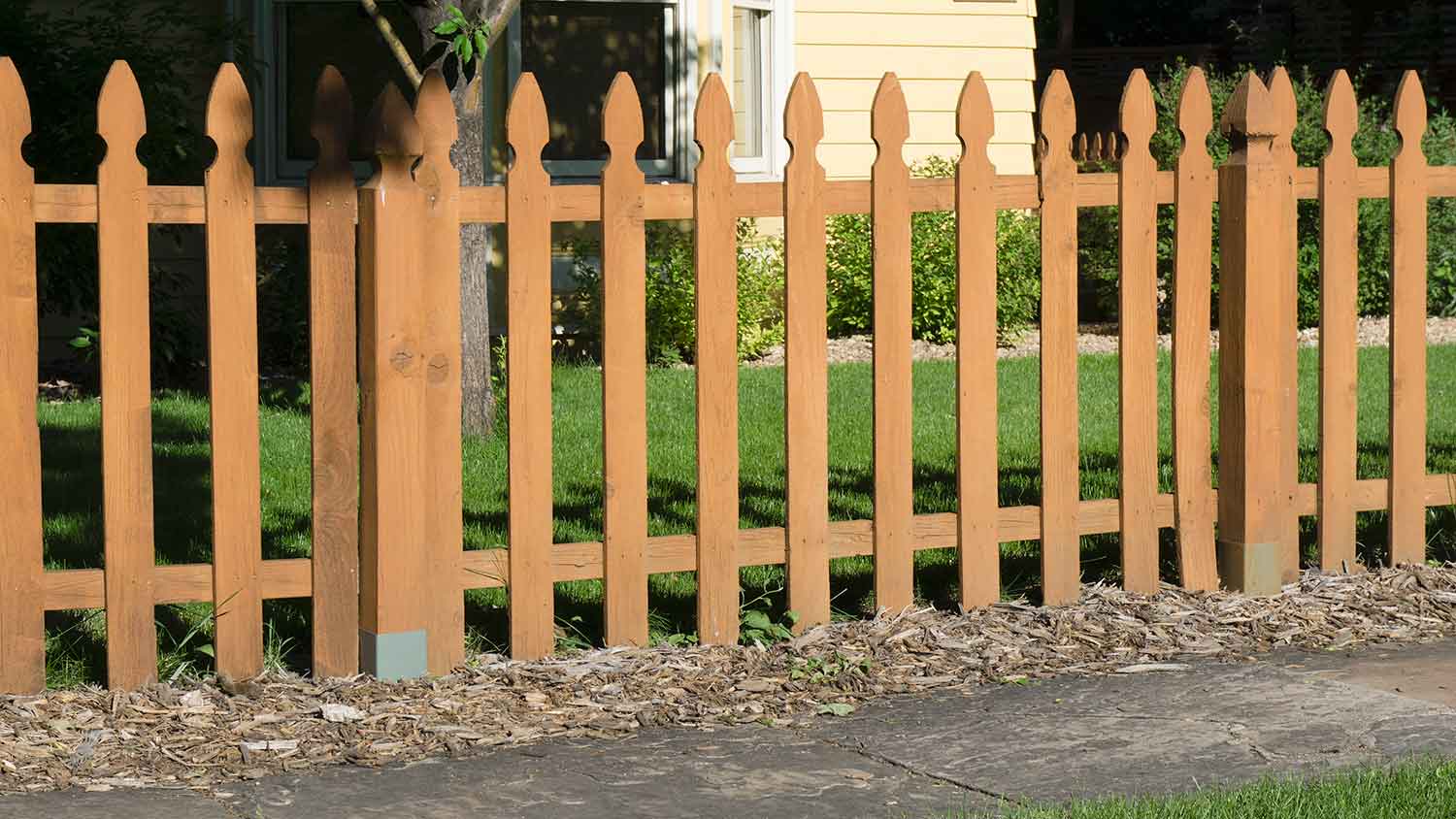How to Tighten a Chain Link Fence
Wise up about weak links


A sagging chain link fence is not only an eyesore, it’s also a liability. Loose chain link fences are more susceptible to damage, and they create opportunities for animals and trespassers to get onto your property. Learn how to tighten your chain link fence, secure your home, and restore its appearance for a boost in curb appeal.
Why Do Chain Link Fences Sag?
Your chain link fence might be sagging and need tightening due to people climbing over it repeatedly, extreme weather (especially major storms), and wear and tear. Sagging in a chain link fence can compromise its overall functionality, and as the sags and gaps grow, wild critters, pets, and intruders will have an easier time bypassing the fence. In addition, a well-maintained chain link fence is more aesthetically pleasing than one suffering from visible wear.
How to Prep to Tighten a Chain Link Fence
Before embarking on this project, it’s advised that you do an overall assessment of your fence’s health. A fence that is rusty, corroded, or weak in multiple places might be in need of replacing rather than repair.
Building a fence requires specific equipment to ensure it is level, deep enough into the ground and properly fastened together. While you may be able to rent it from your local hardware store, we suggest contacting a pro with the proper tools and experience for the job.
How to Tighten a Chain Link Fence

With the help of a few key tools—including tension bars, a fence stretcher, tension bands, a wrench, and bolts—the process of tightening a chain link fence is an easy one that can be done in just a few hours.
Insert the Tension Bar
Slide a tension bar vertically through the chain links at the end where you plan to tighten the fence.
Use the Fence Stretcher
Attach the fence stretcher to one end of the tension bar. The other end of the fence stretcher should be attached to a fixed point that can act as an anchor.
Create Tension
Pull the fence stretcher; apply even tension. The fence should begin to tighten. Stop pulling once the fence appears taut and all signs of sagging have disappeared. Be cautious to not over-tighten the fence, as this can put stress on the posts.
Secure Your Fence
With the fence under tension, use a second tension bar at the pulling side to lock it into its new position. Slide the tension bar close to the post on the opposite end, making sure it covers the height of the fence.
Affix Tension Bands
Secure the tension bar to the fence post using tension bands and bolts. Using a wrench, tighten the bolts to secure the fence against the post. Repeat this as necessary throughout the fence line to maintain even tension.
How to Prevent Fences from Sagging

Following these tips can extend the life of your chain link fence or aid you in purchasing a sturdier fence in the future.
1. Buy a Galvanized Steel Fence
Galvanized steel is coated with zinc, which makes it resistant to rust and corrosion caused by extreme weather. Consider purchasing a fence made with thick gauge wires for extra strength.
2. Install the Fence Correctly
When installing a new chain link fence, be sure to install it correctly. Your new fence should be secure, without any sagging. If you’re unsure about your ability to properly install a chain link fence, reach out to a local chain link fence installation pro.
3. Regularly Inspect Your Fence
Take time each quarter to walk around your fence and look for signs of wear and tear that need to be addressed, such as rust, sagging, or missing links.
4. Make Repairs ASAP
As soon as you notice sagging or other damage, repair the fence. Tackling any small issues as soon as they happen can prevent them from growing into larger ones. This will help to maintain your fence’s overall structural integrity.
5. Install Tension Wire or a Top Rail
A tension wire or top rail can give your fence added strength and stability.
DIY vs. Hiring a Pro
Going the DIY route to tighten a chain link fence can save you on labor costs—a professional will charge an average of $50 per hour for this work—but if you aren’t familiar with this kind of project, it might be best to bring in an expert. A pro can do a thorough assessment of your chain link fence and check for any other problems; fixing issues as soon as they appear will prolong the life of your chain link fence and keep it in optimal working order.
Frequently Asked Questions
A wobbly fence can be caused by a number of things, though poor installation is the usual culprit. It’s always best to have your fence installed by a professional who can ensure the posts are placed correctly and that the chain links have the correct amount of tension.
The cost to install a fence runs $3,216, on average. The final price will depend on many factors, such as the fence size, materials used, and required permits, as well as gates or other added features. If you need to remove an existing fence before installing a new one, you will need to pay for that work as well.
Fences last between five and 30 years on average, depending on the material. Chain link fences are prone to rust, which can lower their lifespan. Vinyl and composite fences are more durable as they don’t rust and don’t need to be sealed like wooden fences do.















